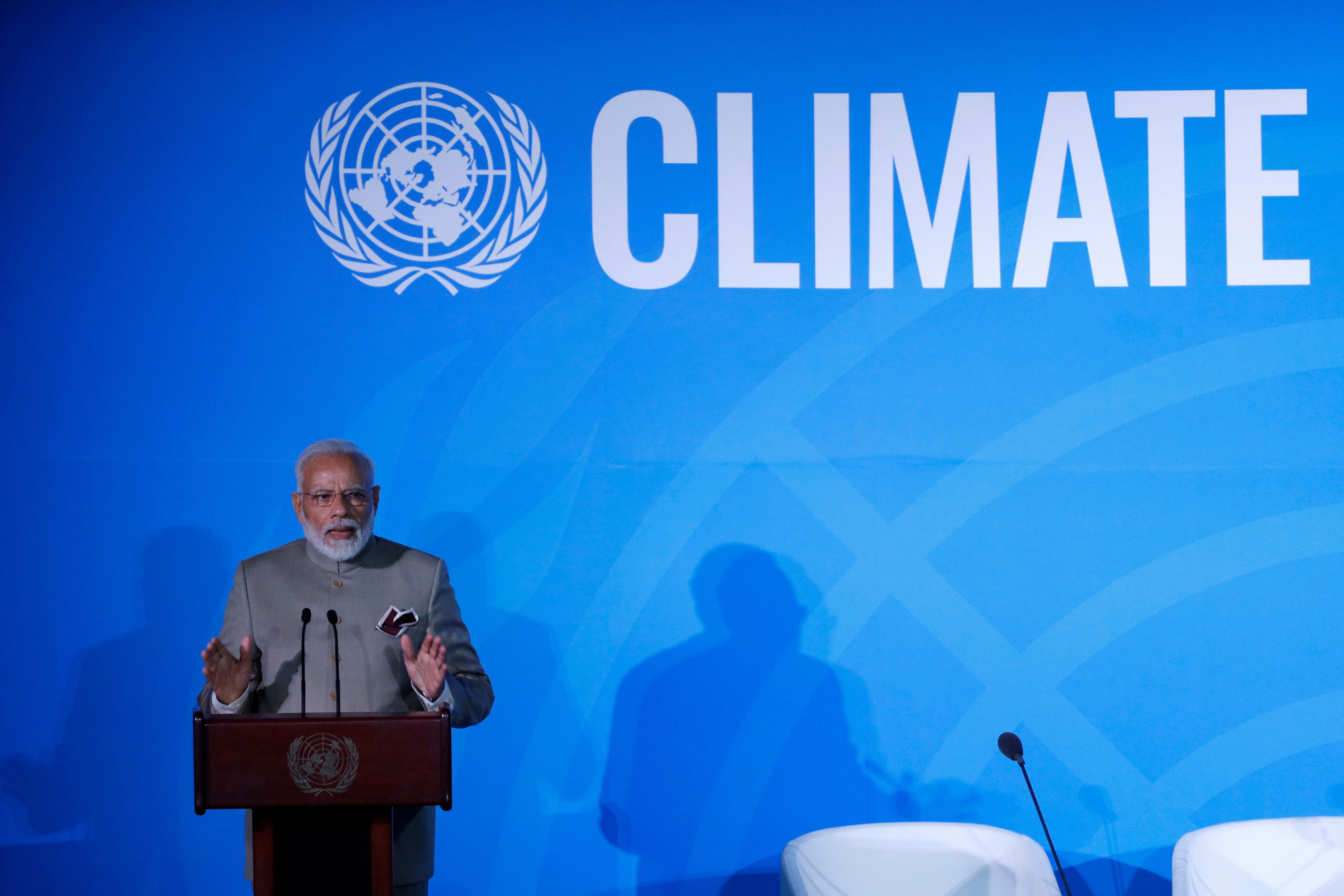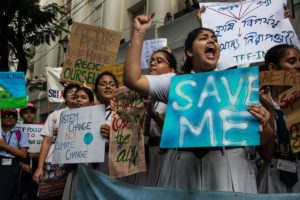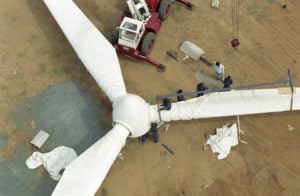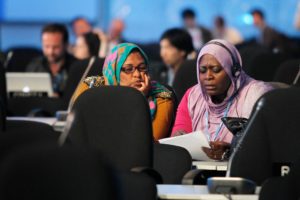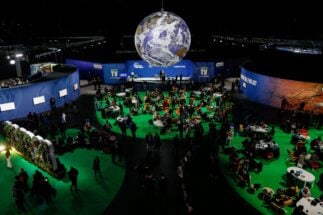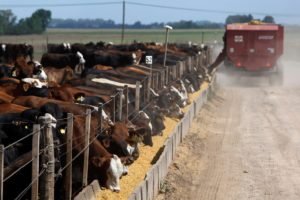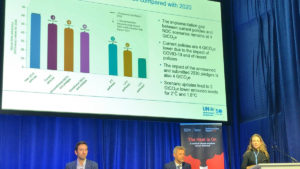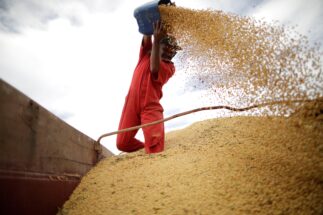As the World Leaders Summit kicked off at COP26 on 1 November, India announced that it would be net zero by 2070. ‘Net zero’ refers to the year by which GHG emissions produced will be balanced by those that are absorbed. By 2030, India – the world’s fourth-largest greenhouse gas (GHG) emitter after China, the US and the EU – will generate 500 GW from non-fossil fuel sources (up from the previous pledge of 450 GW), Prime Minister Narendra Modi pledged. This will be 50% of the country’s installed energy capacity.
Modi said India would reduce emissions by 1 billion tonnes by 2030 and would reduce emissions intensity by over 45%. Emissions intensity reduction is not reduction in total emissions, but reduction in emissions per unit of GDP.
According to The Third Pole’s conversations with policymakers, India’s updated NDC, whenever it is submitted, may also include a mission to push green hydrogen as a clean fuel; achieving land degradation neutrality to handle emissions from agriculture; and an enhanced tree-planting drive.
The UN defines LDN as “a state whereby the amount and quality of land resources, necessary to support ecosystem functions and services and enhance food security, remains stable or increases within specified temporal and spatial scales and ecosystems”.
Among other South Asian countries, Bangladesh, Nepal and Pakistan have been ambitious in their updated NDCs, though question marks remain on implementation. Bhutan will play a key role in the negotiations, as it currently chairs the Least Developed Countries (LDC) Group. The group outlined its priorities at a meeting in October, including a call for G20 countries to align the NDCs with the 1.5C target and urgently deliver on promised financing. Sonam Phuntsho Wangdi, the chair of the group, has already made it clear that LDCs need much more in climate funds.
COP26 starts on sombre note
The UN climate summit COP26 is starting on a more pessimistic note than any of the annual meetings of the UN Framework Convention on Climate Change (UNFCCC) since the 1990s. Even if the updated pledges from over 100 countries are implemented, we will be moving to a 2.7-degree-Celsius warmer world by the end of the century compared with pre-industrial times. This is despite the fact that all nations committed to a 2C ceiling and to strive to keep warming within 1.5C.
The average global temperature is already 1.2C warmer than pre-industrial times, and the impacts are showing in more frequent and more intense floods, storms, droughts and landslides, and faster sea level rise. All countries are being hit; developing countries that have less money to handle the impacts are angry because the long-promised USD 100 billion a year in climate finance from developed nations by 2020 will now not be available before 2023. In a statement last week, the Alliance of Small Island States described this failure as “a grave disappointment”, adding that “the impact this has had on trust cannot be underestimated”.
COP26 needs political will
The recent announcement of that delay, along with lack of substantial new commitments from China, are among the main cause of pessimism on COP26 outcomes. The conference may well make progress on and even finalise the rulebook for implementing the Paris Agreement, now that Brazil is indicating a way forward in carbon markets – the issue that held up two climate summits.
3%
Percentage of the USD 16.9 trillion in Covid-19 recovery spending that has gone on clean energy
But by itself, that will not provide the political push needed for the kind of action that climate science tells us is required to keep the target 1.5C in sight. The updated Sustainable Recovery Tracker from the International Energy Agency shows clean energy accounts for just 3% of the USD 16.9 trillion in Covid-19 recovery spending so far, and even less in developing countries. This means global carbon dioxide emissions remain on an upward trajectory, with this year set for the second-largest annual increase in history.
A joint report by the Stockholm Environment Institute, International Institute for Sustainable Development, Overseas Development Institute, E3G and the United Nations Environment Programme released on 20 October adds that the world’s governments are on track to produce more than twice the amount of fossil fuels in 2030 than would be consistent with limiting warming to 1.5 degrees. The gulf between current action and what is needed to stay on track to the 1.5C goal remains as stark as ever.
Finance, justice and equity key for India at COP26
Climate finance is currently in crisis, with the promise of USD 100 billion per from developed countries by 2020 going unkept, and a continued dearth of funds for adaptation. Modi in his speech on 1 November supported the demand from the Africa Group for developed countries to pay USD 1 trillion in climate finance. He demanded that climate finance be monitored in the same way mitigation actions are monitored internationally, and added that developed countries that fail to meet their commitments should be put under pressure.
Larger developing countries are trying to navigate the funding crisis through private investments, with government institutions standing as loan guarantors. The International Solar Alliance (ISA), initiated by India, plans to mobilise USD 1 trillion in this way for all member countries by 2030. R K Singh, India’s power minister, recently said: “The ISA can enable energy access for 800 million people worldwide. ISA will cover credit guarantees.” Modi and UK Prime Minister Boris Johnson are slated to launch the next phase of the alliance in Glasgow, a phase called “One Sun, One World, One Grid”.
At the same time, India will continue to push for climate justice at the COP26 negotiations. Bhupender Yadav, India’s minister for environment, forests and climate change, said at an online meeting earlier this month: “Equity and climate justice are touchstones of any global climate response. Concerted actions are needed in terms of cooperation between all countries, especially with developed countries taking a lead in climate action through mitigation, adaptation and providing support to developing countries in terms of climate finance, capacity building and technology transfer.”
Developed economies should significantly advance their target of achieving net-zero and not wait till 2050Arunabha Ghosh, head of Council on Energy, Environment and Water,
In the same vein, there has been pushback in India to demand from other countries to commit to a net-zero year, on the basis of climate justice. Arunabha Ghosh, head of the New Delhi-based think-tank Council on Energy, Environment and Water, said in a recent statement: “Equity must be at the heart of the net-zero debate. Developed economies should significantly advance their target of achieving net-zero and not wait till 2050. This will give developing countries room to pursue a just and sustainable energy transition.”
The activists’ demands
A few days before the start of the conference in Glasgow, activists under the Climate Action Network (CAN) umbrella sent an open letter to Alok Sharma, COP26 president, and to heads of delegations demanding that finance for loss and damage – the unavoidable climate impacts from decades of warming – be delivered at COP26. The activists described the postponement of the finance commitment from 2020 to 2023 as “a serious betrayal of faith”.
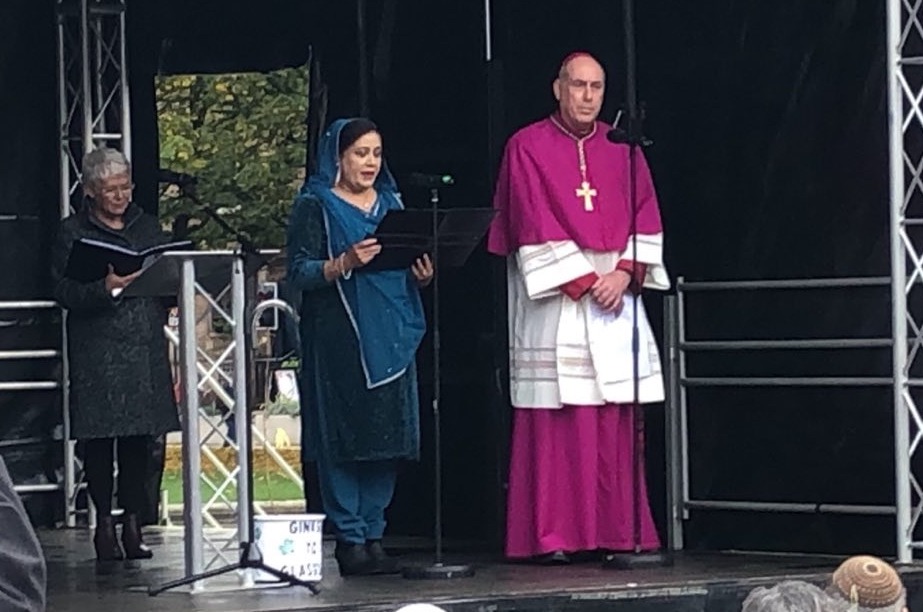
In a press release accompanying the open letter, Li Shuo, senior global policy adviser at Greenpeace East Asia, said: “We urge countries to deliver what they promised.”
Anaid Velasco, legal research manager at Centro Mexicano de Derecho Ambiental (the Mexican Centre for Environmental Law) and CAN Latin America, said: “COP26 is the perfect opportunity for countries to show they have learned from the recent extreme climate events… Equity and human rights must guide the adoption of improved and progressive commitments aligned with a 1.5C pathway.”
Editor’s note: This article was updated on 1 November at 5.20 PM UK time
